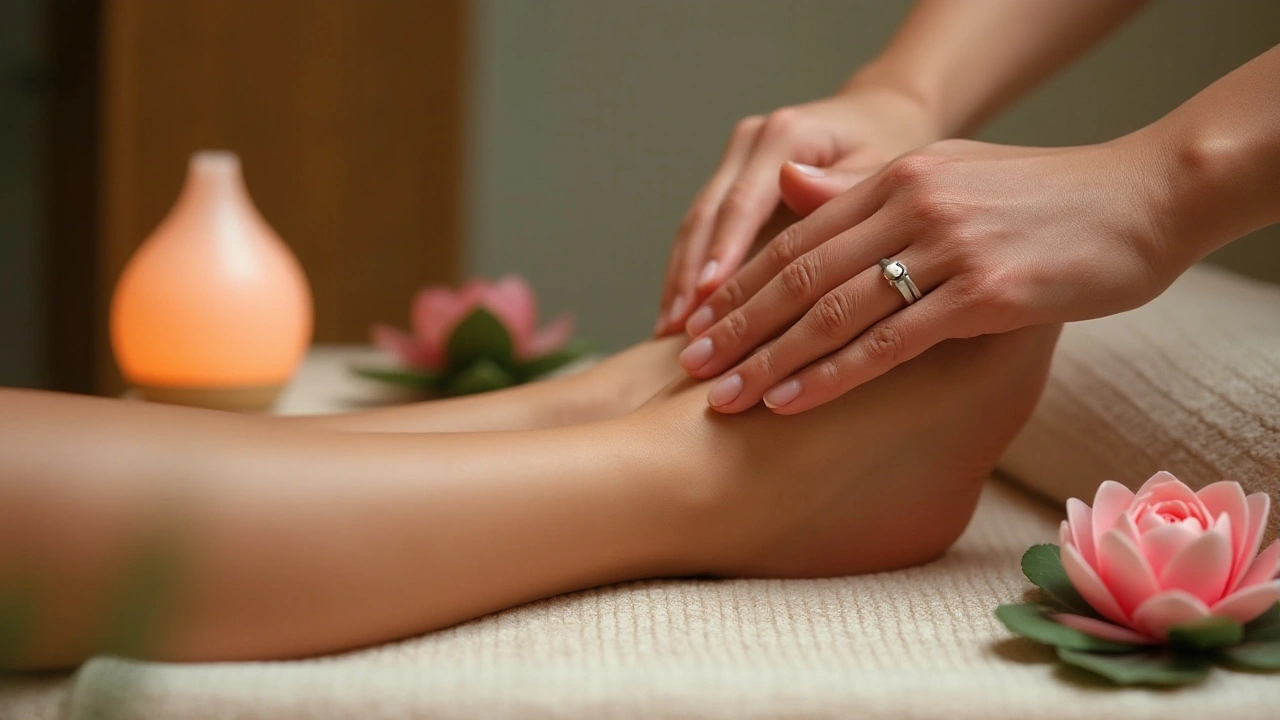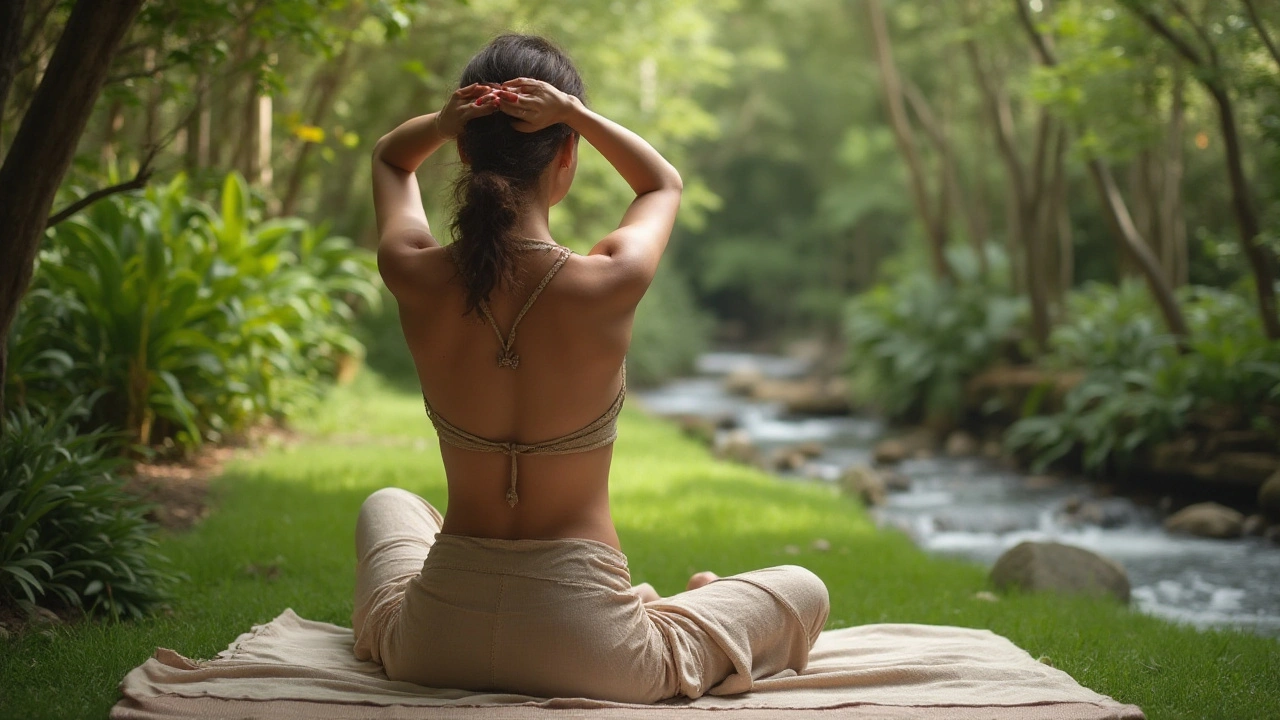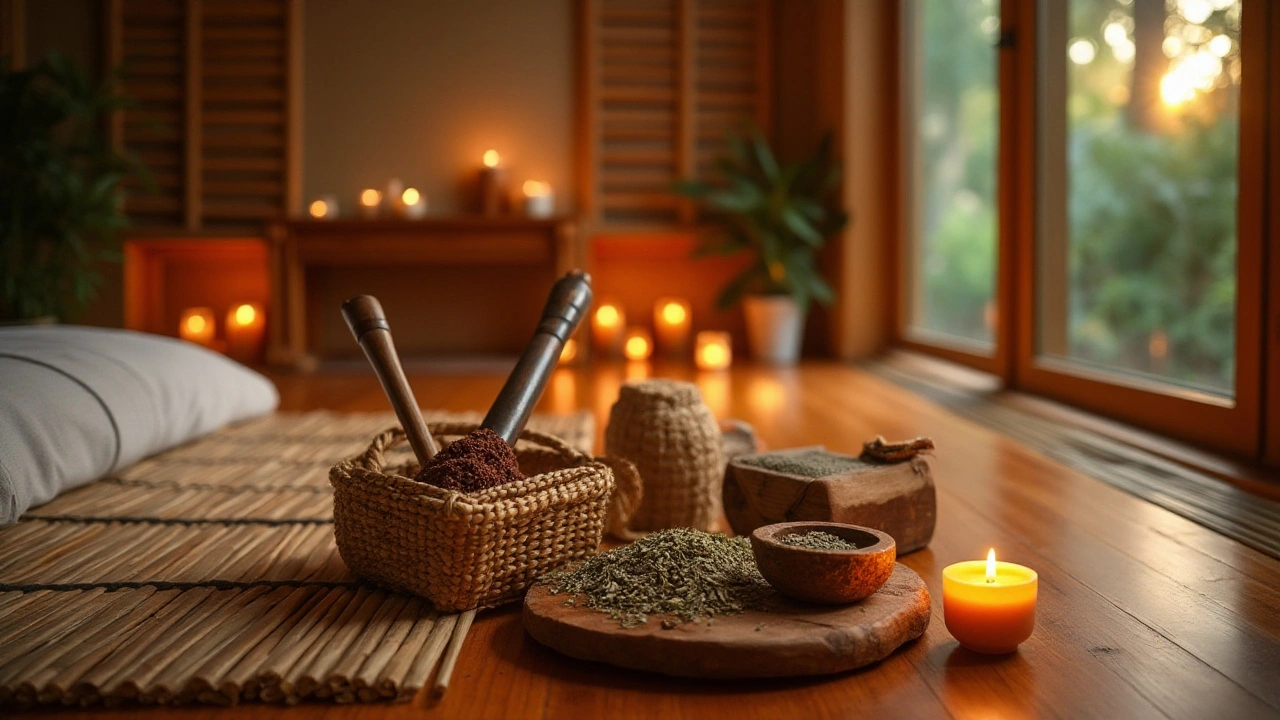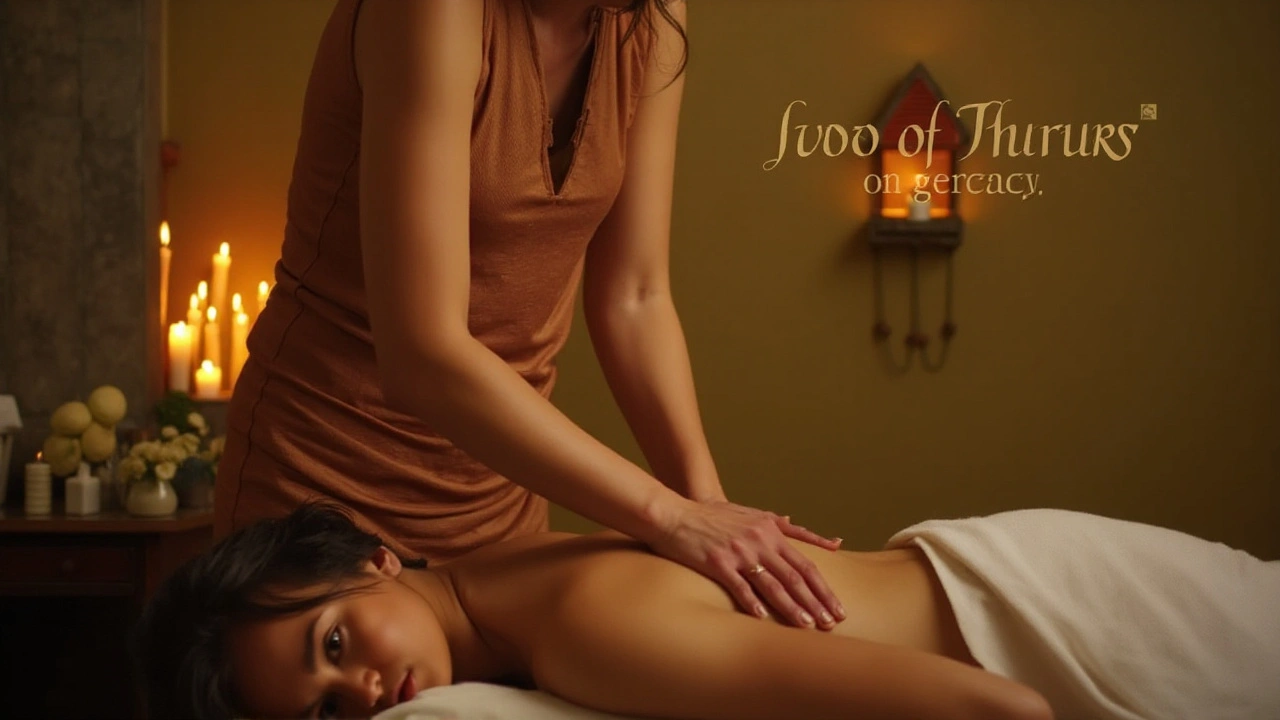In a world spinning with endless tasks and responsibilities, stress has become an unwelcome companion for many. Seeking solace, people are turning to ancient practices for relief. One such gem from the past is Thai massage, revered not just as a treatment but as an art form.
Thai massage isn't your typical spa experience. This dynamic and interactive bodywork incorporates acupressure, yoga-like stretches, and rhythmic compression. Its roots trace back over 2,500 years, combining influences from Indian Ayurvedic and Chinese healing traditions. The practice is deeply intertwined with Thailand's culture and spirituality, making it a unique journey for the body and soul.
Unravel the secrets of this extraordinary massage and discover how it eases stress and promotes relaxation. By understanding its techniques and benefits, you can harness its power to enhance your well-being and bring balance into your life. Whether you're a seeker of serenity or merely curious about this ancient wisdom, Thai massage offers a pathway to tranquility and rejuvenation.
- The Origins of Thai Massage
- Techniques and Methods
- Health Benefits
- Incorporating Thai Massage in Daily Life
The Origins of Thai Massage
Thai massage, a practice that has stood the test of time, traces its roots to ancient Thailand over two millennia ago. It is often linked to Jivaka Kumar Bhaccha, a figure revered in Thai history as the 'Father of Medicine.' According to legend, Jivaka was a physician to the Buddha and was instrumental in crafting the foundation for this healing technique. His legacy is celebrated with reverence, and his teachings are said to blend profound elements of spiritual, medical, and therapeutic wisdom. The marriage of these elements culminated in the birth of this unique and holistic therapy known today as Thai massage.
The development of Thai massage was not an isolated affair. It grew from a rich tapestry of cultural exchanges in the Southeast Asian region. The practice absorbed various influences, notably from Indian Ayurveda and Chinese acupressure. This combination means that Thai massage is unlike any other massage therapy, offering a mix of intense pressure, assisted yoga poses, and meditation. Over centuries, it evolved from a healing practice among monks into a widespread therapeutic treatment, preserving its core intent of promoting health and balance.
Interestingly, Thai massage was traditionally performed in temples by monks, further cementing its spiritual roots. It was believed that the practice did not merely target the muscles but aimed to enhance the energy flow within the body. This technique was designed to align the energy meridians or 'Sen Lines,' akin to the nadis in Indian yoga and the meridians in Chinese medicine. Change and growth are constants, and such is the history of Thai massage, which bears testament to the enduring desire for holistic healing among human societies.
Throughout its history, Thai massage has been revered not just for its physical benefits but for its spiritual essence. As one practitioner famously noted, "
Thai massage is not about performing the right technique but connecting deeply with both the giver and the receiver's spirit." This sentiment highlights how Thai massage remains a deeply personal journey, one where the masseur and recipient often find themselves in a meditative state, working towards harmony and wellness.
To preserve this ancient art, Thailand's government and wellness community have undertaken initiatives to educate and promote traditional Thai massage worldwide. As a result, its practice has transcended cultural and geographical borders. Enthusiasts and wellness seekers across the globe reap the benefits of this ancient therapy that has continued to resonate with contemporary needs for stress relief and holistic care.
For individuals interested in experiencing Thai massage, it is worthwhile to seek trained practitioners familiar with its rich history and techniques. By doing so, one honors the deep-rooted traditions that make Thai massage not just a stress-busting therapy, but a profound journey into healing and mindfulness.

Techniques and Methods
Thai massage, hailed as an ancient healing art, unfolds like an elegant dance of movements and techniques, each step thoughtfully designed to promote harmony and healing. At the heart of this practice lies a blend of stretching and pressure point work that sets it apart from other forms of massage. Practitioners, often referred to as therapists, utilize their entire body to guide the session, making it not just a relaxing experience but a highly interactive one as well.
The session typically begins with the recipient lying on a floor mat, dressed in comfortable attire to allow full range of motion. The therapist then begins working on energy lines known as 'sen', which, according to Thai healing philosophy, are pathways for vital energy. By applying gentle to firm pressure along these lines, often using thumbs, palms, forearms, elbows, and sometimes knees and feet, the massage stimulates the body’s natural energy flow. This is believed to balance the body's energy, promoting physical and emotional well-being. It's interesting to note that the technique is not just about pressure; it’s about understanding the rhythm and flow, ensuring the recipient feels both relaxed and invigorated at the end of the session.
"Thai massage is like doing yoga without doing any work. It’s the yoga of lazy people," says David Coulter, an anatomy instructor and renowned author on massage techniques.Stretching plays a crucial role, with each movement inspired by yoga asanas. This is where Thai massage distinguishes itself from many Western modalities. The therapist guides the recipient’s body through a series of yoga-like poses, enhancing flexibility and easing tension. These stretches, when paired with synced breathing techniques, not only help in relaxing the muscles but also aid in calming the mind, reinforcing the massage's effectiveness as a stress reliever.
While traditional Thai massage involves a sequence of movements from head to toe, customized approaches are often employed to address specific needs. For instance, if an individual is experiencing back or neck discomfort, a therapist might spend more time on stretches and pressure in those areas, employing techniques such as spinal twists or neck stretches. This adaptability makes Thai massage a highly personal and effective health tool, catering to the unique requirements of each individual.
Another fascinating aspect of Thai massage is its incorporation of meditation and mindfulness. It's not just the physical act that is important, but also the connection between the therapist and the recipient. Often, practitioners begin the session by centering themselves with a mindfulness exercise. This creates a shared space where both parties are fully present, allowing the body to relax more deeply into the massage. This holistic approach is arguably one of the reasons why Thai massage is considered a powerful antidote to stress and a beacon of relaxation in today's fast-paced world.

Health Benefits
When we talk about stress relief, Thai massage stands out as a beacon of therapeutic magic. This ancient art form is not merely a dance of hands and feet. It is a holistic healing system that works wonders on the mind and body. Its profound effects start with relieving stress, which is something everyone could use a little less of. By applying gentle pressure along the body's energy lines and using a series of yoga-like stretches, it activates the body's intrinsic healing process, leading to a reduction in cortisol levels and an increase in serotonin production, which improves mood and relaxation.
The science behind the impact of Thai massage on stress levels has been backed by several studies. These studies highlight how regular sessions can significantly decrease psychological stress, producing deep feelings of calm and well-being. The practice encourages the movement of synovial fluid that lubricates the joints, supports lymphatic flow for detoxification, and enhances circulation, all contributing to a stronger immune system and increased vitality.
An often overlooked aspect is how this massage enhances flexibility and muscular balance. The stretching techniques used serve to increase elasticity in muscles, which not only helps in injury prevention but also alleviates muscular tension and improves posture. Stretching tight muscles, mobilizing stiff joints, and promoting free movement are integral parts of Thai massage. This is one reason it’s often favored by athletes, as regular sessions can play a significant role in speeding up recovery while also boosting performance.
Physical benefits aside, Thai massage works like a catalyst for mental clarity and energy revitalization. With the mind finally given permission to relax, the rest of the body follows. One can almost feel a tangible shift in mental focus as stress dissipates. Having one’s body in physical tranquility allows the mind to ease from its burdens, opening up space for better cognitive function and enhanced focus on daily tasks. No wonder several wellness experts regard Thai massage as a secret weapon against modern-day stress.
"Thai massage is like a dance that energizes both the body and soul," says Dr. Nattapon Ratanawongsa of Bangkok’s Wellness Institute. "It is a healing journey that unravels physical and emotional tension, leaving one with a deep sense of peace and revitalization."
Let’s not forget how this therapy fosters an intimate connection with one’s own body. Heightened body awareness leads to improved self-care choices, as individuals learn to tune in to what their bodies need. This intimate understanding of oneself can lead to healthier lifestyles and a better quality of life. It’s as though each session peels back layers of stress and tension, revealing a more relaxed and happier you. The fascinating cycle of healing that traditional Thai massage sets in motion proves its place as not just a treatment but as a lifestyle enhancer, creating waves of health benefits that resonate deeply within.

Incorporating Thai Massage in Daily Life
Embracing Thai massage as a part of your regular routine can seem a bit overwhelming at first. However, with a few tweaks and a bit of dedication, it can easily blend into your lifestyle, becoming a cherished ritual for well-being. The first step is understanding how transformative even a short, regular practice can be. Imagine starting or ending your day with a session, releasing pent-up stress after long hours of work, or simply soothing the mind during hectic periods. The holistic nature of Thai massage means you can focus on both mental and physical health, leading to a harmonious sense of balance.
To bring this ancient tradition into everyday life, you might want to start by learning some basic techniques. A plethora of resources, from books to online tutorials, provide step-by-step guidance, enabling one to practice these methods effectively at home. For those with a tight schedule, dedicating just ten to fifteen minutes a day to a simplified self-massage routine can yield significant benefits. Not only does this practice offer immediate stress relief, but it also fosters a deeper connection with your body, allowing you to respond more intuitively to its needs.
Another key aspect of integrating Thai massage is locating a reputable therapist who specializes in this traditional art. Regular appointments can be a great addition to your self-care regimen, offering an opportunity for professional treatment tailored to your personal physical and emotional requirements. If you're new to the concept, try starting with a monthly session, gradually increasing the frequency as you become more comfortable and begin to notice its beneficial effects. Combining professional sessions with your home practice can accelerate your journey toward a stress-free existence, ultimately leading to a more relaxed and centered lifestyle.
It's also worth exploring the spiritual and meditative aspects of Thai massage, deeply rooted in the principles of mindfulness and intention. Meditating or setting an intention before your routine can enhance the experience, making it not just a physical exercise, but a mental ritual as well. This holistic approach invites you to slow down and fully engage with each moment, enriching not just your massage practice, but your daily life as an extension of this mindful awareness.
To support your practice, consider creating a soothing environment at home. Simple touches like calming music, aromatic incense, or dim lighting can transform a plain space into a serene retreat, increasing the tranquility of your session. Consider this your personal sanctuary where stress is unwelcome, and relaxation reigns supreme. Remember, the aim is to embrace Thai massage as part of your lifestyle—not just as a sporadic treatment but as a continual pillar of your wellness routine.


 Health and Wellness
Health and Wellness